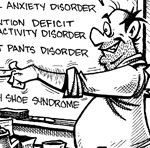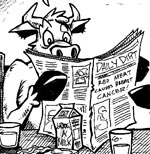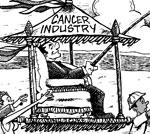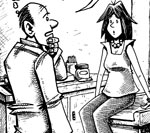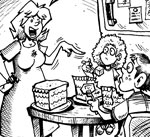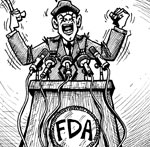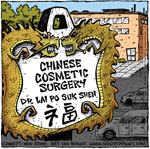Olive Leaf Extract Benefits
| Share on Facebook | Share on Twitter | Share on Google+ |
Judaism, Christianity, and Islam share the story of a character named Noah, who was commanded by God to build an ark to carry his family and two of every animal to survive the Great Flood. The Qu'ran even has an entire chapter devoted to Noah, called the "believer most grateful."
Noah, his wife, and sons rode with the animals for 40 days without any sign of land. When the ark finally came to rest on Mt. Ararat, the story goes, the first sign that the ordeal was over was an olive branch brought back to Noah by a dove.
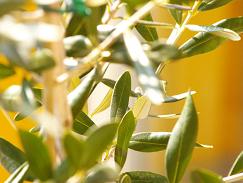
The olive branch has become a worldwide symbol of peace. But as it is with many stories, there is also a corresponding scientific fact. The olive leaf is the source of potent antioxidants that can fight infections of all kinds without risk of developing antibiotic or antiviral resistance.
For most of history, however, the olive leaf was regarded as a nuisance interfering with the manufacture of olive oil. Only in the last 20 years have olive leaf extracts been recognized as important, useful tools of antimicrobial defense, but olive leaf teas have been used as tool of herbal healing for almost 200 years.
Olive Leaf Teas in Herbal Medicine
Olive leaf teas were the predecessors of today's olive leaf extracts. They first became popular in the 1820's as a treatment for malaria.
It is hard to imagine today just how great a plague malaria used to be all over the world. Anywhere there was standing water and a dense population of human beings, malaria-bearing mosquitoes quickly appeared.
Decades of eradication efforts have eliminated malaria from most of the industrialized world, but malaria was once a leading cause of death, especially among the young and healthy. Even today, however, approximately 225 million people in the developing world, especially in sub-Saharan Africa, are infected with the disease.
The first treatment for malaria that actually worked was quinine, made from the bark of the cinchona tree, found in Bolivia and Peru and brought back to Europe in the 1600's. The demand for quinine, however, outstripped demand, so the doctors of the time searched for other herbal remedies for the disease. In the 1820's doctors begin to prescribe teas made of olive leaf, and a blend of strong olive leaf tea and wine known as Tinctura Olea Foliorum.
Olive leaf had the advantage of being locally available throughout much of Europe and the Middle East, and much less expensive than quinine. Later in the 1800's, chemists isolated a compound they called oleuropein from the leaf.
The olive tree makes oleuropein as a natural insecticide. The oleuropein in olive leafs protects them against the lacey-winged olive fly that attacks the fruit and the black scale that attacks the bark.
The oleuropein in virgin olive oil is what gives the first pressing its characteristically acrid taste. A potent antioxidant, the oleuropein in olive leaf tea is 400% times more potent than the vitamin C in an equivalent amount of orange juice, and not only fights certain infections in human beings, but also stimulates fat burning in the brown fat to give the body extra energy to fight infection.
Both olives and olive leaves contain oleuropein, but the chemical is most abundant in green leaves and green olives. As the olive matures and changes from green to black, oleuropein levels fall off drastically and fall to zero when the olive is completely black. Even in green olives, oleuropein is bound to complex sugars that make it harder for the body to absorb than the oleuropein in olive leaf.
The oleuropein in olive leaf is described as anti-aging, anti-bacterial, anti-microbial, antioxidant, anti-cancer, anti-atherogenic, anti-inflammatory, and skin protectant. The promoters of olive leaf teas and extracts tend to get a little carried away extolling its benefits, but there is no doubt that it can be very helpful in supporting recovery from infection. In the laboratory, oleuropein and olive leaf extracts and teas have been found to:
- Stop the release of tissue-destructive toxins by Staphylococcus aureus,
- Prevent Salmonella bacteria from multiplying,
- Stop the multiplication of methicillin-resistant Staphylococcus aureus (MRSA), and
- Prevent the multiplication of E. coli.
There is a US patent for an olive leaf tea product that claims antiviral benefits against hepatitis and herpes in humans, feline leukemia virus in cats, and parvovirus in puppies. Oleuropein seems to stimulate the immune system to consume infected cells, and also to interfere with the ability of bacteria and viruses to use amino acids to make the proteins they need to be able to multiply.
There are also studies that indicate that this olive leaf chemical can help lower blood pressure, protect brain tissue from free radicals, lower fevers, relieve joint pain, stabilize atrial (heart) rhythm, and reverse wrinkling. These claims, however, are based on very preliminary, laboratory evidence. The ability of olive leaf teas to fight infections, however, has been known for nearly 200 years.
How to Make Olive Leaf "Extract" at Home
Any tea is a hot-water extract of the herb used to make it. Making olive leaf tea is the way to make your own olive leaf extract at home.
To make your own olive leaf tea, you will need a source of olive leaves. If you happen to have an olive tree in your back yard, you could pick young green leaves that have an especially high oleuropein content.
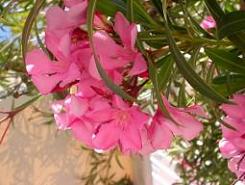
Where you could run into trouble is picking leaves from someone else's "olive" tree. You especially do not want to mistake an oleander bush for an olive tree. (It happens.) Oleander leaves do have some therapeutic uses, but in most home-brewed teas they are extremely toxic. You need to be sure the leaf you are using is olive leaf and not something else.
The best quality olive leaf for making teas comes from California. Olive leaves harvested in the Middle East are often broken before they are dried. The leaf expends its antioxidant content protecting itself against infection before you can use it in your tea. The highest antioxidant content is found in manzanillo olive leaves grown in California, even though most of the harvest is used to make olive leaf extract for encapsulation.
To make your own olive leaf tea, start with 1/2 pound (225 grams) of air-dried olive leaves. If you buy a one-pound (454 gram) bag, just save the other half for later. First rinse the leaves by submerging them in water and draining off the rinse water. You don't need to dry the leaves, just to take them out of the rinse water.
Next place the leaves in a stoneware crock pot. Add 1 gallon (4 liters) of the purest water you can find. Set the crock pot on low heat. You want to brew the olive leaf tea at about 175 F (85 C) for five to six hours, without ever reaching the boiling tea.
When the tea has brewed for at least five hours, turn off the heating element and allow it to cool to room temperature. Strain the tea, discard or compost the tea leaves, and store the tea in a covered container in the refrigerator. Drink half a cup (120 ml) of the tea three times a day, first thing in the morning, at noon, and in the late afternoon, until symptoms are resolved or you need to brew more tea.
Can Anything Go Wrong with Olive Leaf Tea?
Olive leaf tea is mildly stimulant. From what my readers tell me, the heavier you are, the more likely it is to keep you up at night if you drink it after dinner. This could be related to the fat-burning effect, but it's not due to caffeine (since there is no caffeine in the leaf).
Also, olive leaf tea is bitterer than olives. You can mask the bitter taste by diluting the tea with water, soda, or seltzer, but not with any beverage sweetened with sugar.
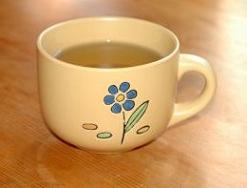
Olive leaf tea is a very natural way to use olive leaf. I think it's the best way to use olive leaf for colds, flu, and sinus infections, especially if you heat it up (on the stove, not in the microwave) before drinking. But if you just don't have time to make olive leaf tea, there is always olive leaf tincture or dried olive leaf extracts in capsules.
Olive Leaf Tinctures and Capsules
Olive leaf tincture is the modern version of Tinctorum Olea Foliorium, which was made until about 1950. It is possible to make olive leaf tincture just by soaking the leaves in ethanol, the kind of alcohol in beverages. Some companies first remove any fatty compounds from the leaves by soaking them in petroleum ether, let the petroleum ether evaporate (at least we all hope it does) and then extract the oleuropein with ethanol.
How can you know your product is not made with petroleum ether? Look for "d-lenolate" on the label. D-lenolate is made by soaking leaves in beverage alcohol for four hours and draining off the extract. The process is repeated 2 or 3 more times, and then the extracts are combined and concentrated by a flash-vacuum process. No harmful chemicals are involved, and the leaves are never subjected to high temperatures.
You don't need a lot of olive leaf extract to give your immune system a boost. Just a single 500 mg capsule a day is enough. There are an astonishing number of infectious conditions that seem to be helped by olive leaf extract.
- Olive leaf in capsules are a good way to boost immune responses to colds and flu. When you have the first symptoms of a cold or flu, don't run to the medicine cabinet to get your olive leaf extract. Instead, take vitamin C, zinc, or elderberry extract (for flu) first. Use olive leaf extract every day during cold and flu season to keep your immune defenses active, and keep vitamin C, zinc, and elderberry on hand just in case you forget your olive leaf and come down with an infection.
- Don't use olive leaf nasal sprays. In theory, they should be highly effective against rhinoviruses that cause colds and bacteria that cause sinusitis. The problem is that the olive leaf nose spray on the market in the USA is, well, a confused formulation. Advertised as "100% homeopathic," it also claims to contain a non-homeopathic dose of grapefruit extract and an indeterminate, but non-homeopathic dose of olive leaf. You'll get better results from the capsules.
- For any other kind of chronic infection, take one capsule of olive leaf extract a day. Olive leaf extract won't stop the infection. Your own immune system will. A 500-mg dose of olive leaf extract every day stimulates the immune system to keep doing its work.
There is also recent clinical evidence that olive leaf extract may be as effective as the ACE-inhibitor captopril for lowering high blood pressure. Physicians at the University of Indonesia gave patients with moderate high blood pressure (approximately 140/90) either two 500 mg doses of olive leaf extract daily or two 12. 5 mg doses of captopril daily. At the end of 8 weeks, the researchers observed approximately the same degree of blood pressure lowering from both olive leaf extract and captopril. Olive leaf extract, however, also lowered triglyceride levels.
If you have moderate high blood pressure, it makes sense to try olive leaf extract as your first treatment. The proof of whether olive leaf extract works, however, can only be determined when your blood pressure actually goes down. Be sure to take your blood pressure regularly, and continue taking olive leaf extract only if it gives you the blood pressure lowering you need. Do not discontinue any prescribed medication without consulting with your doctor.
Frequently Asked Questions
Q. Why don't you discuss the healing power of calcium elenolate in olive leaf extracts?
A. Despite what the bestselling book on olive leaf extracts tell us, there isn't actually any calcium elenolate in olive leaf extracts. This compound is made by boiling elenolic acid with calcium hydroxide. The human body makes elenolic acid from oleuropein, but it isn't present in the leaf itself.
Q. Will olive leaf extract cure cancer?
A. No. All the research to date has been done at the laboratory level. Experiments have found that oleuropein stops the multiplication of breast cancer cells, in a tissue culture. Experiments have found that oleuropein may stop the spread of breast cancer to the lungs although no actual breasts or lungs were involved in the study!
There is a long list of potential anti-cancer effects for olive leaf extract that are backed up with very preliminary evidence. What scientists do not yet know is whether the chemicals in olive leaf extract that cause all these wonderful olive leaf extract benefits in laboratory studies will also help real people with real diseases. There chemicals in olive leaf extract might not be absorbed from the digestive tract, or they might not reach the target organ, or they may not work the same way in a living person's organ as they do in a culture of cancer cells in a Petri dish. There just isn't good evidence yet for using olive leaf extract for treating cancer.
Anecdotal evidence does count, but I'm not aware of any reliable testimonials about olive leaf extract for cancer.
Q. I read a book that says olive leaf extract can transform HIV-positive serostatus to HIV-negative serostatus. Is this right?
A. Those same books also say that HIV is not the cause of AIDS. If HIV is not the cause of AIDS, what is the benefit of seroconversion from HIV-positive to HIV-negative? There would be none.
Q. Does olive leaf extract cure diabetes?
A. Again, the answer is no, although there have been two preliminary trials that suggest that olive leaf extract may help relieve some of the complications of diabetes.
Studies with mice in a research lab in Pakistan have found that olive leaf extract may prevent nerve damage caused by high blood sugars. Whether people would get the same benefits from olive leaf extract is not yet known. It makes sense to try to olive leaf extract for relief of nerve pain if you are diabetic, as long as you are keeping your blood sugar levels under control. Olive leaf extract will not lower blood sugar levels.
There has also been a study at Gazi University in Turkey that provides preliminary evidence that olive leaf extract may stop the "burn out" of beta-cells in early type 2 diabetes, a condition that leads to a need for insulin injections. Again, the early indications are very promising, but the clinical research has not been done yet.
Selected References:
Visioli F, Poli A, Galli C. Antioxidant and other biological activities of phenols from olives and olive oil. Med Res Rev. 2002;22:65-75. doi:10. 1002/med. 1028.
Amiot MJ, Fleuriet A, Macheix JJ. Accumulation of oleuropein derivatives during olive maturation. Phytochemistry. 1989;28:67-70. doi:10. 1016/0031-9422(89)85009-5.
Amiot MJ, Fleuriet A, Macheix JJ. Importance and evolution of phenolic compounds in olive during growth and maturation. J Agric Food Chem. 1986;34:823-826. doi:10. 1021/jf00071a014.
Amiot MJ, Fleuriet A, Macheix JJ. Importance and evolution of phenolic compounds in olive during growth and maturation. J Agric Food Chem. 1986;34:823-826. doi:10. 1021/jf00071a014.
Amiot MJ, Tacchini M, Fleuriet A, Macheix JJ. The technological debittering process of olives: characterization of fruits before and during alkaline treatment. Sci Aliments. 1990;10:619-632.
Anderson OM, Markham KR. Flavonoids: chemistry, biochemistry and applications. Florida: Taylor & Francis; 2006.
Angerosa F, D'Alessandro N, Konstantinou P, Di Giacinto L. GC-MS evaluation of phenolic compounds in virgin olive oil. J Agric Food Chem. 1995;43:1802-1807. doi:10. 1021/jf00055a010.
Baracco A, Bertin G, Gnocco E, Legorati M, Sedocco S, Catinella S, Favretto D, Traldi P. A comparison of the combination of fast-atom bombardment with tandem mass spectrometry and of gas chromatography with mass spectrometry in the analysis of a mixture of kaempferol, kaempferide, luteolin and oleuropein. Rapid Commun Mass Spectrom. 1995;9:427-436. doi:10. 1002/rcm. 1290090512.
Bianco A, Lo Scalzo R, Scarpati ML. Isolation of cornoside from Olea europaea and its transformation into halleridone. Phytochemistry. 1993;32:455-457. doi:10. 1016/S0031-9422(00)95015-5.
Bonoli M, Bendini A, Cerretani L, Lercker G, Toschi TG. Qualitative and semiquantitative analysis of phenolic compounds in extra virgin olive oils as a function of the ripening degree of olive fruits by different analytical techniques. J Agric Food Chem. 2004;52:7026-7032. doi:10. 1021/jf048868m.
Brenes M, Garcia P, Duran MC, Garrido A. Concentration of phenolic compounds change in storage brines of ripe olives. J Food Sci. 1993;58:347-350. doi:10. 1111/j. 1365-2621. 1993. tb04272. x.
Campeol E, Flamini G, Chericoni S, Catalano S, Cremonini R. Volatile compounds from three cultivars of Olea europaea from Italy. J Agric Food Chem. 2001;49:5409-5411. doi:10. 1021/jf010455n.
Capasso R, Evidente A, Scognamiglio F. A simple thin layer chromatographic method to detect the main polyphenols occurring in olive oil vegetation waters. Phytochem Anal. 1992;3:270-275. doi:10. 1002/pca. 2800030607.
Climato A, Mattei A, Osti M. Variation of polyphenol composition with harvesting period. Acta Hort. 1990;286:453-456.
Damtoft S, Franzyk H, Jensen SR. Biosynthesis of iridoids inSyringaandFraxinus: carbocyclic iridoid precursors. Phytochemistry. 1995;40:785-792. doi:10. 1016/0031-9422(95)00210-X.
Damtoft S, Franzyk H, Jensen SR. Biosynthesis of secoiridoid glucosides in. Oleaceae. Phytochemistry. 1993;34:1291-1299. doi:10. 1016/0031-9422(91)80018-V.
Damtoft S, Franzyk H, Jensen SR. Excelsioside, a secoiridoid glucoside from. Fraxinus excelsior. Phytochemistry. 1992;31:4197-4201. doi:10. 1016/0031-9422(92)80442-H.
De Laurentis N, Crescenzo G, Lai OR, Milillo MA. Investigation on the extraction and concentration of oleuropein and flavonoids in Olea europaea L. based products. Pharm Pharmacol Lett. 1997;7:27-30.
Di Donna L, Mazzotti F, Salerno R, Tagarelli A, Taverna D, Sindona G. Characterization of new phenolic compounds from leaves of Olea europaea L. by high-resolution tandem mass spectrometry. Rapid Commun Mass Spectrom. 2007;21:3653-3657. doi:10. 1002/rcm. 3262.
Esti M, Cinquanta L, Notte EI, La Notte E. Phenolic compounds in different olive varieties. J Agric Food Chem. 1998;46:32-35. doi:10. 1021/jf970391+
Exarchou V, Godejohann M, van Beek TA, Gerothanassis IP, Vervoort J. LC-UV-solid-phase extraction-NMR-MS combined with a cryogenic flow probe and its application to the identification of compounds present inGreek oregano. Anal Chem. 2003;75:6288-6294. doi:10. 1021/ac0347819.
Exarchou V, Troganis A, Gerothanassis IP, Tsimidou M, Boskou D. Identification and quantification of caffeic and rosmarinic acid in complex plant extracts by the use of variable-temperature two-dimensional nuclear magnetic resonance spectroscopy. J Agric Food Chem. 2001;49:2-8. doi:10. 1021/jf990928e.
Ficarra P, Ficarra R, de Pasquale A, Monforte MT, Calabro ML. HPLC analysis of oleuropein and some flavonoids in leaf and bud of Olea europaea L. Farmaco. 1991;46:803-815. PMid:1772565.
Goupy P, Fleuriet A, Amiot MJ, Macheix JJ. Enzymatic browning, oleuropein content, and diphenol oxidase activity in olive cultivars ( Olea europaea L. )J Agric Food Chem. 1991;39:92-95. doi:10. 1021/jf00001a017.
Le Tutour B, Guedon D. Antioxidant activities of Olea europaea leaves and related phenolic compounds. Phytochemistry. 1992;31:1173-1178. doi:10. 1016/0031-9422(92)80255-D.
Limiroli R, Consonni R, Ottolina G, Marsilio V, Bianchi G, Zetta L. 1H and13C NMR characterization of new oleuropein algycones. J Chem Soc Perkin Trans 1. 1995:1519-1523. doi:10. 1039/P19950001519.
Limiroli R, Consonni R, Ranalli A, Bianchi G, Zetta L. 1H NMR study of phenolics in the vegetation water of three cultivars of Olea europaea : similarities and differences. J Agric Food Chem. 1996;44:2040-2048. doi:10. 1021/jf9507349.
Ryan D, Robards K, Prenzler P, Jardine D, Herlt T, Antolovich M. Liquid chromatography with electrospray ionisation mass spectrometric detection of phenolic compounds from Olea europaea . J Chromatogr A. 1999;855:529-537. doi:10. 1016/S0021-9673(99)00719-0.
Servili M, Baldioli M, Selvaggini R, Macchioni A, Montedoro G. Phenolic compounds of olive fruit: one- and two-dimensional nuclear magnetic resonance characterization of Nuzhenide and its distribution in the constitutive parts of fruit. J Agric Food Chem. 1999;47:12-18. doi:10. 1021/jf9806210.
Soler-Rivas C, Espin JC, Wichers HJ. Oleuropein and related compounds. J Sci Food Agric. 2000;80:1013-1023. doi:10. 1002/(SICI)1097-0010(20000515)80:7<1013::AID-JSFA571>3. 0. CO;2-C.
Susalit E, Agus N, Effendi I, Tjandrawinata RR, Nofiarny D, Perrinjaquet-Moccetti T, Verbruggen M. Olive ( Olea europaea ) leaf extract effective in patients with stage-1 hypertension: comparison with Captopril. Phytomedicine. 2011 Feb 15;18(4):251-8. Epub 2010 Oct 30.
Tatsis EC, Boeren S, Exarchou V, Troganis AN, Vervoort J, Gerothanassis IP. Identification of the major constituents of Hypericum perforatumby LC/SPE/NMR and/or LC/MS. Phytochemistry. 2007;68:383-393. doi:10. 1016/j. phytochem. 2006. 11. 026.
-
Skin CareMen Skin Care
-
Free ResourcesFree eBooks
-
Let food be thy medicine, and let thy medicine be food.Hippocrates
-
What We RecommendIf you do an analysis of the ingredients in a bottle of
 Total Balance and compare with other products you will find that it provides exceptional value for money…even against simple mass produced products with lower bottle costs.
Total Balance and compare with other products you will find that it provides exceptional value for money…even against simple mass produced products with lower bottle costs.
-




